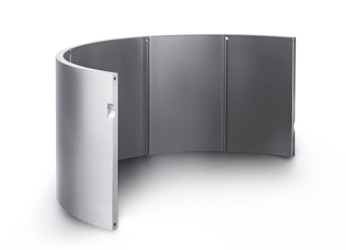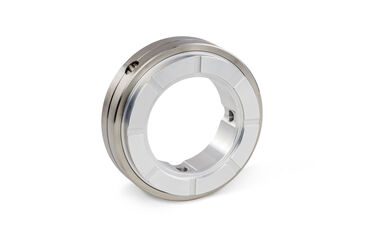- Company
- Industries
- Product areas
- Innovation
- Jobs and Career
- Apprenticeship
- Kariéra
- News
When discussing bearing technology, terms like plain bearing, hydrodynamic bearing and fluid film bearing are often used, sometimes interchangeably, sometimes with clear distinctions. This variation in terminology can lead to confusion, particularly when working across industries or international markets.
So what’s the difference? Are these three terms describing the same thing or do they refer to specific bearing types and operating principles?
This article provides clarity. We explain

A plain bearing, also known as a sliding or sleeve bearing, is a type of bearing that supports relative motion between two surfaces without rolling elements. Instead of rolling, the shaft (or journal) slides against the bearing surface.
Plain bearings are among the oldest and most widely used bearing types in industrial applications.
Plain bearings are used in a wide range of industries, including:
Commonly plain bearing is used as an umbrella term that includes various bearing types, materials and operating principles, including hydrodynamic and hydrostatic variants. From the basic types to the highly engineered ones, what they all share is simplicity in design: a shaft, a surface and usually a lubricant.
We at Miba focus on plain bearings, which operate on hydrodynamic and hydrostatic principles, not self-lubricating.

A hydrodynamic bearing is a specific type of plain bearing that operates based on the principle of fluid film lubrication. In this design, the bearing surfaces are completely separated by a thin film of lubricant, typically oil, generated by the relative motion between the shaft and the bearing.
This self-sustaining lubrication mechanism forms a pressure-driven fluid wedge that supports the applied load without any direct metal-to-metal contact during normal operation. The result: minimal wear, low friction and high reliability over extended operating periods.
Hydrodynamic bearings are commonly used in applications with high loads, high speeds or continuous operation, such as:
At Miba, we distinguish between two core types of hydrodynamic plain bearings, depending on application requirements and installation context:
Based on the direction of the load:
Both journal and thrust bearings in Miba’s product portfolio are typically engineered for hydrodynamic operation. This means that under proper operating conditions, a full fluid film separates the bearing surfaces, minimizing wear and friction.

The term fluid film bearing refers to a category within plain bearing technology that also operates with a continuous film of lubricant separating the bearing surfaces. The term is usually used for bearing assemblies like:
As a high-performance class of plain bearings, fluid film bearings are commonly used in the following applications
These bearings are typically selected where extreme speeds or precision requirements make rolling element bearings unsuitable.
At Miba, fluid film bearings are considered part of the broader hydrodynamic and even broader plain bearing family. Miba plain bearings for high-load or high-speed applications are designed to operate under hydrodynamic conditions.
This includes both:
Additionally, for specific applications, hydrostatic bearing designs are also available, where the fluid film is maintained via external pressure systems, even at standstill.
In technical communication, clarity and consistency are essential, particularly when collaborating across industries, geographies and engineering disciplines. That’s why Miba uses a clearly defined terminology in all product documentation and customer interfaces.
At Miba, the term plain bearing is used as the umbrella term for all bearing types that operate via sliding contact,
Depending on the application, operating principle and system requirements, these bearings are further specified by their lubrication regime or geometry, but they all fall under the plain bearing category.
Miba offers customized plain bearing solutions backed by decades of tribological and application-specific expertise.